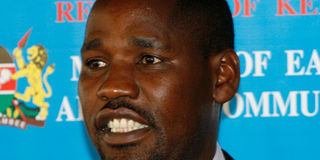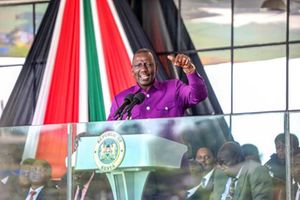Minister: No single state controls EAC resources

Meru Governor Peter Munya. The county government faces a deficit of Sh223 billion to implement its ambitious five-year development plan. FILE
What you need to know:
The Pillars of the East African Community
The Customs Union: Established in January 2010 to harmonise customs duty laws and levies in the region. It sought to exempt goods from member countries from being taxed.
The Common Market protocol: Established in July 2010 to free the movement of people and labour across members’ borders.
Monetary Union: Yet to be established but it seeks to provide for a common currency among members states.
Political Union: will be the ultimate pillar of the Community and will seek to have a single political federation headed by one person across member states.
Resources shared among members of the East African countries are no longer under the control of a single state.
East African Community assistant minister Peter Munya told a political forum on the EAC integration Friday that progress realised so far on the protocol provides an efficient solution on how these resources should be shared.
“Issues on shared resources in the area of Lake Victoria Basin or even tourism along the borders are no longer the preserve of a single state but partner states,” he said on Friday in a speech read on his behalf by by the Ministry’s PS David Nalo.
The minister sought to clarify what has been seen as continual wrangling between Kenya and Uganda over Islands in Lake Victoria. The islands of Migingo, and now Ugingo, have been a source of conflict between the two countries with Kenyan fishermen claiming to be mistreated by Ugandan authorities.
In 2009, both countries committed to a joint survey to establish the true owner of Migingo Island. It was also agreed that no country should claim ownership in the interim. However, the status of that survey is still unknown while Ugandan authorities have since returned to stand guard.
But at a meeting with political party representatives on how to support the EAC integration process in Nairobi, the minister announced that there was no need for feuding among states when there is a way for solving crises.
“The Treaty provides for cooperation in political, regional peace and security as well as defence. This implies that as the Community progresses, the necessary framework is in place to address emerging issues.”
He said the government will continue to educate the public on the provisions of the Protocol as a way of reducing inter-state conflicts.
According to figures from the EAC Ministry, Kenya leads all the other four countries in awareness of the protocol, with eight people in every group of ten having a clue of it. However, while the government generally says the populace is aware, much of the rural area is yet to be reached.
The government has been publishing information through the media as a way of reaching a larger population but so far, only 45,000 people have been accessed directly.
The Community which was revived in 1997 seeks to make achievements on four platforms with a culmination in a regional political federation.
But it emerged that political parties in the country hardly have this view of a federation in their agenda nor manifestoes. Many of them sprout only when the General Election is nigh, while some do not even have a representation in Parliament.
The one-day workshop was meant to raise awareness over this issue.



